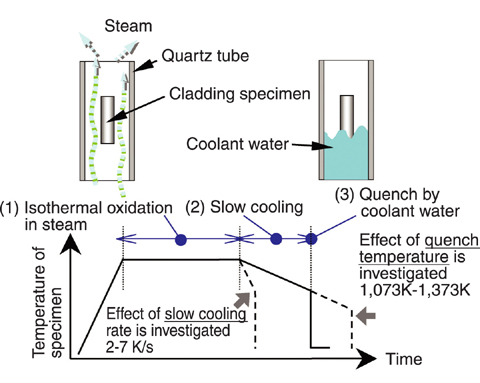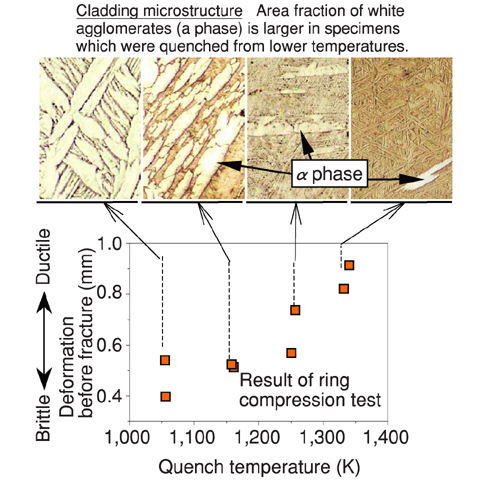
Fig.5-7 Oxidation and quench test to simulate LOCA conditions

Fig.5-8 Correlation between quench temperature and cladding ductility
Loss-of-coolant accident (LOCA) is one of the postulated accidents in the safety design of a nuclear power plant. In a LOCA condition, the fuel temperature increases until the Emergency Core Cooling System (ECCS) starts to quench the fuel bundle in a few minutes. The water level in the reactor vessel is recovered by ECCS and the overheated fuel is cooled. A fuel rod consists of Uranium dioxide pellets and Zircaloy tube (cladding). When the cladding is severely oxidized and embrittled due to long time exposure to steam at high temperatures, fuel fracture might occur by thermal shock during the quench. Fuel fragments can block coolant channels and reduce coolability of the reactor core.
To avoid embrittlement of the fuel cladding, which would be dangerous in a LOCA, the safety criteria limits of the peak cladding temperature and of the ratio of the thickness of oxidized cladding were determined. These safety criteria were determined based on tests simulating the steps of a LOCA to clarify the conditions in which fracture occurs. In these tests, heated and oxidized cladding is slowly cooled and then quenched by re-flooding water. Simulation of the slow cooling process before the quench was considered necessary because the post quench ductility of the cladding might be affected by the change of cladding microstructure which is caused by the diffusion of oxygen atoms during slow cooling process. Data, which showed the effect of slow cooling on cladding ductility after quench were limited, and the conditions under which the cladding ductility changes were not clear.
In the present study, cladding specimens were oxidized in steam at high temperatures, cooled slowly, and quenched by water flooding (Fig.5-7). These tests were conducted with different rates of slow cooling and quench temperatures in order to investigate their effects on the post quench ductility of the cladding. As a result, it was found that the post-quench ductility decreased with decrease in the quench temperature as shown in Fig.5-8. On the other hand, the effect of the slow cooling rate was negligible. In the metallurgical examination after oxidation (Fig.5-8), the area of the α phase region, which appeared to be a white agglomerate, was large in the embrittled cladding specimens. The α phase region is oxygen-rich, hard, and brittle compared to the matrix region around the agglomerates. The ductility reduction with the quench temperature decrease can be attributed to the relative increase in the area of α-phase regions, which can be a preferential path for crack propagation.
LOCA-simulated experiments regarding fuel safety have been conducted with slow cooling processes. The present results indicate that the slow cooling processes give conservative conditions regarding cladding ductility. The present study provided useful information to establish an experimental method appropriate for the safety evaluation.